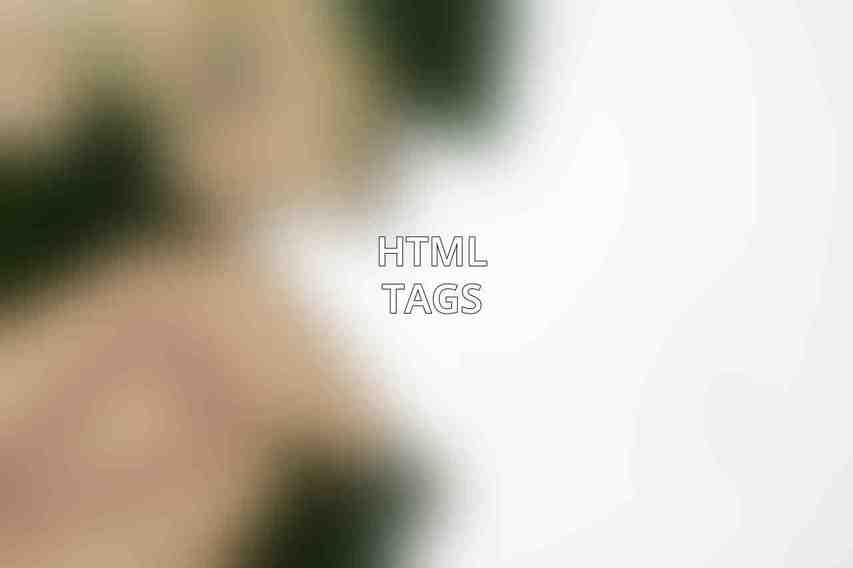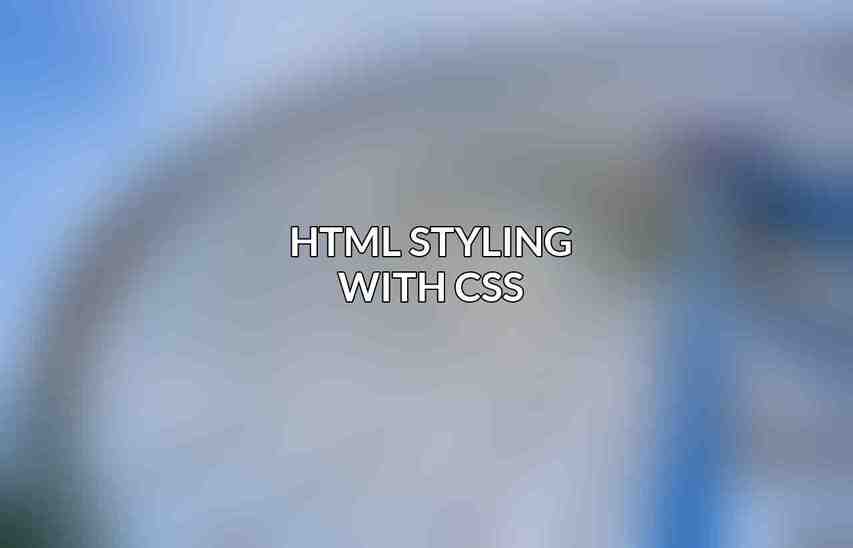HTML or HyperText Markup Language is the standard markup language used to create and design documents on the World Wide Web. HTML plays a crucial role in web development by providing the structure and content of web pages. There are three main types of HTML elements: block, inline, and void elements. Block elements start from a new line, inline elements do not start on a new line, and void elements are self-closing. Dive deeper into Node.js Guide for Back-End Development
HTML Structure
In understanding HTML structure, a basic HTML document includes the
, , , and elements. The element contains the title of the document, metadata (data about the HTML document), and links to external resources. On the other hand, the element contains the main content of the document, including headings, paragraphs, lists, and images vital for web presentation.
HTML Tags

s are used to define different elements within a webpage. They consist of an opening tag, content, and a closing tag. Tags can also have attributes that provide additional information about an element. Commonly used s include headings Learn more about Mastering CSS: Styling for Web Development, , paragraphs , images .
HTML Attributes
Attributes in HTML are used to provide additional information about elements and are defined within the opening tag of an element. They follow a name=”value” format. Common HTML attributes like id for unique element identification, class for styling and referencing elements, src for specifying image sources, and href for defining hyperlink destinations play crucial roles in web development.
HTML Semantic Elements
Semantic elements are tags that provide meaning to the content they enclose, aiding in search engine optimization and accessibility. Tags like , , , and have specific use cases and benefits in organizing and structuring the content of a webpage.
HTML Lists
unordered
HTML Tables
HTML tables are used to display structured data in rows and columns on a webpage. They consist of elements like colspan and rowspan help adjust the structure and layout of the table.
HTML Forms
HTML forms provide a means for users to input data that can be submitted to a server for processing. Form elements such as input fields, text areas, dropdown menus, and buttons are utilized in creating interactive web forms. Attributes like type, name, and value assist in defining the behavior and content of form elements. Find more on JavaScript Essentials for Dynamic Websites
HTML Styling with CSS

Cascading Style Sheets (CSS) are used to enhance the visual presentation of HTML elements. CSS properties like color, font-family, font-size, and background-color can be used to style elements. Selectors in CSS help target specific elements for styling based on their element type, class, or ID.
Mastering the basics of HTML is essential for anyone venturing into web development. Understanding HTML elements, attributes, semantic tags, lists, tables, forms, and styling with CSS equips individuals with the foundation needed to create well-structured and visually appealing web pages. Continuously expanding knowledge in HTML opens doors to endless possibilities in crafting engaging online experiences.
For those looking to delve deeper into HTML and web development, resources like Mozilla Developer Network, W3Schools, and Codecademy offer tutorials, documentation, and interactive learning platforms to further enhance skills in this field.
Frequently Asked Questions
What is HTML?
HTML stands for Hypertext Markup Language, which is the standard markup language for creating web pages.
Why is it important to learn HTML for web development?
HTML is the foundation of web development. Understanding HTML is crucial for creating web pages, structuring content, and styling websites. You can find more information on Responsive Design Techniques in Web Dev
How can I start learning HTML?
There are plenty of online resources available for learning HTML, including tutorials, courses, and documentation. You can also practice by creating your own simple web pages.
What are some basic s I should be familiar with?
Some basic s you should know include ,
, to ,
Can I use HTML along with CSS and JavaScript to create interactive websites?
Yes, HTML works in conjunction with CSS (Cascading Style Sheets) for styling and layout, as well as JavaScript for interactivity and dynamic content. Together, they form the backbone of modern web development.

